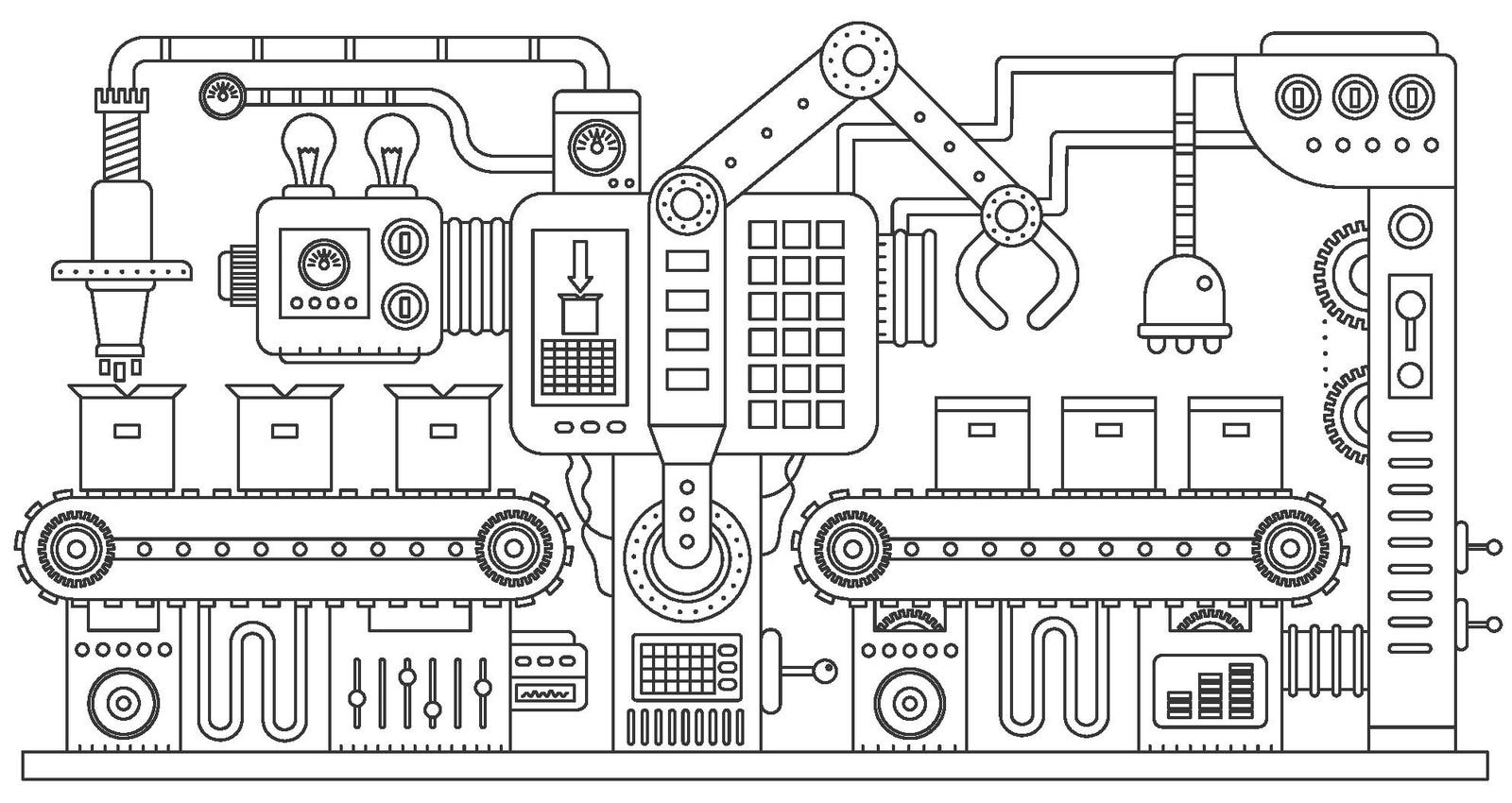The machine doesn’t care what it’s making—only that it’s making it fast. Frictionless systems … More
The great smoothing is here. But what if friction isn’t failure? What if it’s the only thing left that still feels real?
This piece continues my article “Meta’s Plans For AI Ads: How Automation Dismantles Culture,” where I explored how automation threatens creative labor. Now, I’m going deeper: not just into what we’re losing, but what we must protect—friction, consent, and the human capacity for meaning.
The AI News Is Clear—Too Clear
- Meta’s AI tools threaten agencies, as ad creation collapses into one-click automation. (WSJ, June 2025)
- Amazon’s free AI video generator floods the market, offering photorealistic ads made in minutes—no crew, no script, no tension. (The Verge, June 2025)
- Google offers buyouts to its Search and Ads teams, reallocating billions into AI infrastructure while quietly erasing the people who built the interface. (Search Engine Journal, June 2025)
These aren’t just headlines. They’re coordinates on a map of erasure.
This isn’t a pivot. It’s a continuation. Meta, Amazon, and Google have a long, calculated history of dismantling everything that came before them under the guise of reducing “friction.” Meta siphoned audience from publishers, then crushed their business model. Google devoured classifieds and local journalism. Amazon disintermediated independent retailers and built a commerce monopoly masked as convenience. Each of these shifts promised efficiency and delivered consolidation.
Now they’re moving upstream. With AI as their engine, they’re coming for the creative layer. And if we think their pursuit of frictionlessness won’t extend into brand, storytelling, and identity, we’ve already lost the plot.
The Historical AI Pattern: Remove Friction, Erode Value
This isn’t theoretical. It’s already happened.
- Meta reduced publishing “friction” by centralizing traffic—and destroyed the business model of journalism.
- Amazon removed the “inconvenience” of brick-and-mortar—and wiped out entire categories of independent retail.
- Google eliminated the friction of classifieds and local media—and gutted regional economies in the process.
Each was presented as innovation. Each led to mass devaluation.
Now those same companies are moving up the funnel—with AI as the scalpel—to extract the last remaining margin in human-led work: branding, storytelling, identity, and desire.
If we pretend this pursuit of frictionlessness will stop short of the emotional, we haven’t been paying attention. The result won’t just be sameness. It’ll be compression—of differentiation, of perceived value, of margin.
And when there’s no friction left to make someone stop and feel? There’s no reason left to pay more. For anything. That’s not just a creative loss. That’s a threat to profitability.
We’ve taught machines to move faster than us, smoother than us, and now speak for us. But the one thing we haven’t taught them? How to care about what happens next.
I’ve sat in rooms where the best ideas weren’t obvious. They were uncomfortable. They got laughed at, challenged, rewritten.
And those are the ones we still remember.
AI: Why Friction Is Form
We’ve been told that friction is inefficiency. That anything slow, messy, or nonlinear is wasteful. But friction isn’t failure. It’s architecture. It gives shape to ideas. It makes meaning take root.
Remove the friction and you remove the form. What’s left is output. Not authorship. Not intentionality. Not risk. Not anything that ever made a thing matter.
Even video—the medium that once required light, timing, pacing, and emotion—is now generated by Amazon in under five minutes. With AI handling production, creation, and deployment, the very texture of storytelling is being erased.
And when the message is frictionless, so is the memory.
AI and Neuroplasticity: Your Brain Needs Friction
The human brain doesn’t grow easily. It rewires itself through difficulty, uncertainty, and contradiction. Neuroscientists call it neuroplasticity—the process by which new neural pathways are formed when we encounter resistance and complexity.
Think about learning to ride a bike. You didn’t master balance through reading. You did it by wobbling. Falling. Adjusting. That struggle is what encoded the learning.
In creative work, the same principle holds. A campaign brief that sparks debate, a draft that undergoes fundamental revision—these are signs that the brain is actively restructuring perception and sharpening understanding. No amount of generative content can do this for you.
The brain doesn’t just tolerate friction; it grows because of it.
The Desirability Problem: Why Struggle Improves Retention
Psychologists, such as Robert Bjork, have demonstrated that introducing intentional obstacles to learning—what he refers to as “desirable difficulty”—enhances retention and depth of understanding. Try recalling a concept before you’re shown the answer. It’s harder. Slower. But you remember it longer. That’s friction in action.
In advertising, we’ve spent years sanding down every edge in the name of clarity. But clarity without tension isn’t clarity. It’s blandness. Great creativity requires effort. It catches you off guard.
That friction forces engagement. And that engagement makes it stick. If it’s too smooth, it slides right off.
This is a form of attentional bias—a cognitive reality that explains why we create and activate narrative in the first place. When words are grouped in a way that’s fresh, specific, and strategically intentional, they interrupt expectation. That’s friction. It forces a pause, processing, and reflection. And in a sea of sameness, that pause is power.
Narratives slow the brain just enough to invite meaning in. They cause us to contemplate, validate, and value. And in a race-to-the-bottom world, friction becomes the difference between something you scroll past and something you feel compelled to pay for.
Strip away that language-level friction and you get optimization without identity—cheap content, cheaper attention, and eventually, commodities no one desires enough to buy at a margin. That’s not just a creative crisis. It’s a business model collapse in slow motion.
This is echoed by the work of Mihály Csíkszentmihályi, a Hungarian-American psychologist best known for introducing the concept of flow—the mental state of deep immersion in meaningful, challenging work. Csíkszentmihályi spent decades studying why some experiences make us feel alive, focused, and fulfilled. His research showed that the most rewarding activities are often preceded by resistance.
“Most enjoyable activities are not natural; they demand an effort that initially one is reluctant to make. But once the interaction starts to provide feedback to the person’s skills, it usually begins to be intrinsically rewarding.”
— Mihály Csíkszentmihályi
Friction, in other words, is the entry fee to flow. It’s not an obstacle to transcendence—it’s the condition for it.
Prediction Errors: Learning Lives in Surprise
The most powerful learning signal in your brain? When something violates your expectations. My friend calls this “anticappointment,” a favorite neologism of his. Neuroscience refers to this prediction error as the moment your brain stops coasting and starts recalibrating. It’s why punchlines land. Why plot twists thrill. Why disruptive creative works.
When AI delivers content perfectly calibrated to what it knows we like, it flattens novelty, we get what we expect—and that’s the problem. Nothing stretches. Nothing stirs.
Friction is what creates those jolts of surprise. And surprise is what teaches. Without friction, the brain stays asleep.
Hypernormalization: When AI Systems Flatten Reality
Berkeley anthropologist Alexei Yurchak, in his book Everything Was Forever, Until It Was No More, coined the term hypernormalization. He describes a society where systems are so optimized and hollow that people continue to believe in them, even though they know they no longer hold meaning.
Yurchak studied late-Soviet life, where official narratives felt eternal and artificial at once. Citizens went through the motions—work, slogans, routine—long after anyone believed the story. The result wasn’t a revolution. It was a slow, soul-deep detachment from reality.
Today’s version? You scroll through infinite, polished content with the faint sense that none of it was made for you. Brand messages, influencer posts, AI-generated ads—all optimized to fit your feed, not your mind. It functions. But it doesn’t stick.
- You consume.
- You forget that you consumed.
- You hold a belief.
- But you know it wasn’t real.
You know this feeling. It’s nostalgia for something you didn’t quite live. Familiarity with nothing specific. The eerie sense that even the intimate has become templated.
That’s the danger of a frictionless world: it erodes not just creativity, but belief, connection, and identity, not through rupture, but through rehearsal. We’re not witnessing liberation. We’re watching reality bleed out by degrees.
Friction is what interrupts the loop. It’s the glitch that reminds you something is off, and makes you care enough to ask why.
AI: Why Friction Becomes the Advantage
Friction is the last honest metric. It’s what reveals taste. It’s what reveals care. It’s the difference between something you scroll past and something that stops you. In a world where every brand has access to the same generative tools, the only real differentiator left is discernment, and discernment doesn’t scale.
Discernment doesn’t scale. That’s why it matters.
It struggles. It questions. It hesitates before hitting publish. This is not about resisting AI. It’s about resisting amnesia. It’s about building systems—and stories—that let humans stay in the loop long enough to feel what they’re making.
Consent: The Disappearing Line Between Influence and Control in AI
Friction doesn’t just slow us down. It reminds us we still have a choice.
When content is optimized to our past behavior, when ads are generated before we know we need them, when every message is invisible in its targeting but intimate in its tone—are we still consenting to what we consume?
Consent isn’t a checkbox. It’s the ability to pause, to question, to say yes with awareness—or no with clarity. But in a frictionless system, consent erodes, not by force, but by design. We don’t opt in—we drift in. We don’t choose—we scroll. We don’t author—we adapt.
Friction is what lets us feel that drift. It’s the tug that says, this wasn’t mine until I made it mine.
Without it, influence becomes indistinguishable from control.
How to Stay Human—and Valuable—in the Age of AI Automation
This isn’t just a philosophical distinction. It’s an economic one. It’s a forecast. Everything on the left can be automated. Everything on the right can’t be faked.
And that’s the opportunity.
If you’re in marketing, brand, or creative work, this isn’t the time to panic. It’s time to get precise. Here’s how to make yourself irreplaceable inside systems designed to erase you:
- Become a curator of prompts, not a consumer of outputs. AI doesn’t know what matters—it only knows what fits. Learn how to direct it with taste, timing, and specificity.
- Reposition yourself around discernment. Don’t chase reach—Chase resonance. Every brand has access to the same tools—the difference is who still knows how to feel.
- Build friction into your creative process. Make time for iteration. Don’t present one idea, present three. Choose the one that surprises you. Then rechallenge it.
- Speak to the boardroom in terms of tension, not tasks. Frame your value as interpretive, not executive. AI can generate. You can judge.
- Protect a ritual of realness. Whether that’s in-person critique, silent brainstorms, or showing up in rooms where decisions hurt a little—make sure your humanity isn’t optimized out.
These aren’t productivity hacks. They’re AI survival strategies for authorship in an age of automation.









